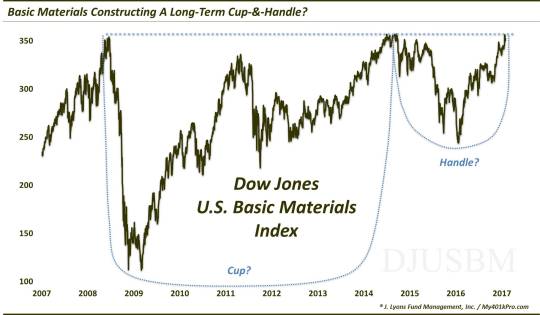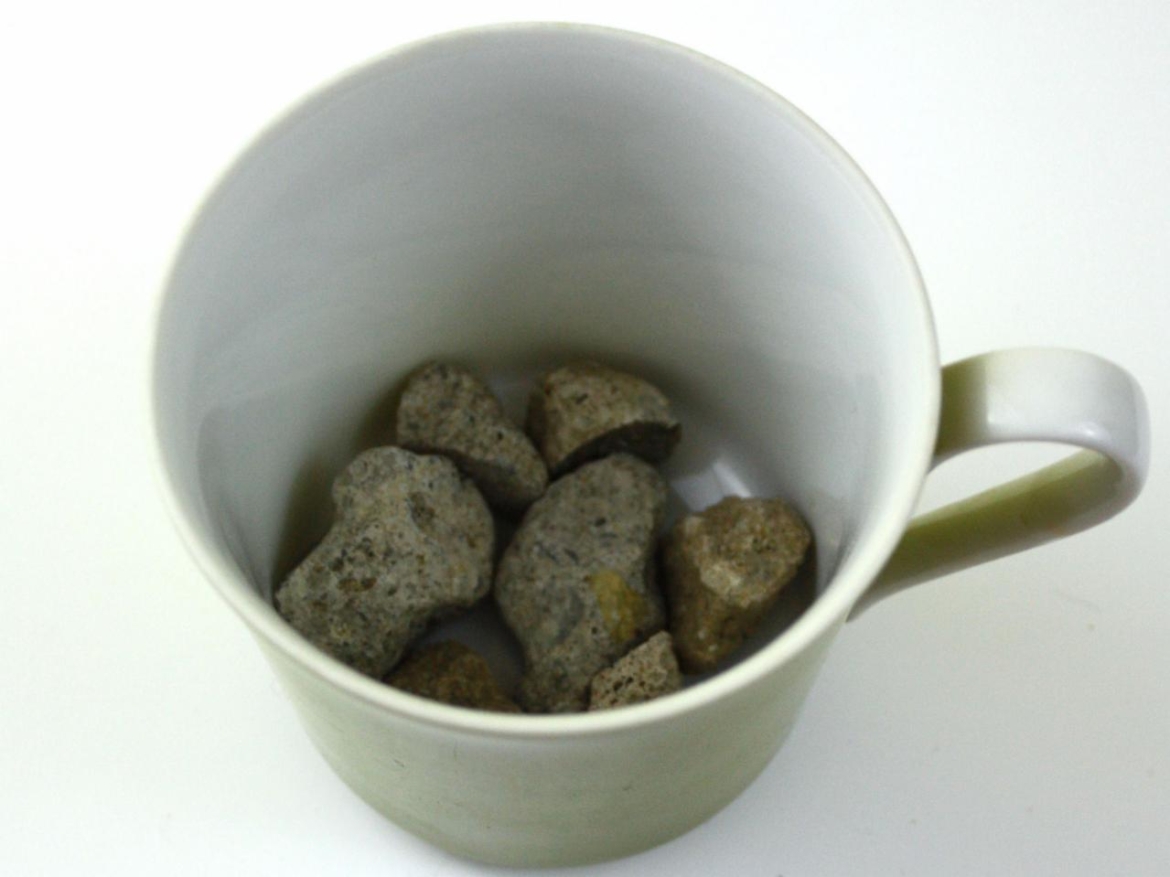Are Materials Stocks Building Foundation For Major Breakout?
Among the main beneficiaries of the post-election “Trump Trade” has been anything related to reflation, construction, etc. In that wheelhouse is the basic materials sector of the stock market. Using the Dow Jones U.S. Basic Materials Index as a measuring stick, the sector is up roughly 15% since the election. The rally has also brought the index up to a very noteworthy area on its chart: its all-time highs near the 356 level, set in 2008 and matched in 2014.

Now, some folks may be concerned about a potential “triple top” in play here. That is possible. However, in our many decades of chart-watching, we have frankly not found much evidence of triple tops that actually panned out. Furthermore, those triple tops that turned out to be valid typically saw a fairly equal distance between the first 2 and second 2 peaks. In this case, the spread in the former is 6 years while the latter is just over 2.
Those spreads between the peaks lead us to an alternate – and bullish – potential interpretation of the chart pattern: a cup-&-handle. As a refresher, a cup-&-Handle pattern involves 2 parts:
- The Cup (2008-2014, in this case): This phase includes an initial high on the left side of a chart followed by a relatively long, often-rounded retrenchment before a return to the initial high.
- The Handle (2014-2017): This phase involves a shorter, shallower dip in the security and subsequent recovery to the prior highs.
The bullish theory is predicated on the idea that after taking a long time for a stock to return to its initial high during the “cup” phase, the “handle” phase is much briefer and shallower. This theoretically indicates an increased eagerness on the part of investors to buy since they did not allow it to pull back nearly as long or as deep as occurred in the cup phase. Regardless of the theory, the chart pattern has often been effective in forecasting an eventual breakout and advance above the former highs.
Even if this interpretation is correct, there is certainly valid reason for caution in the immediate-term as prices are just now reaching their former peaks. It would not be unusual nor unhealthy to see a temporary retrenchment or consolidation before an attempted breakout takes place. Besides, as we say often, never anticipate a breakout.
That should be especially important advice in this case since we are dealing with a very long-term scenario. When and if the breakout does occur, investors should have ample time and profit potential with which to take advantage as the resultant rally following such a breakout could potentially last for years.
_____________
More from Dana Lyons, JLFMI and My401kPro.
The commentary included in this blog is provided for informational purposes only. It does not constitute a recommendation to invest in any specific investment product or service. Proper due diligence should be performed before investing in any investment vehicle. There is a risk of loss involved in all investments.



